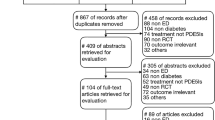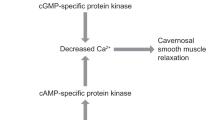Abstract
Erectile dysfunction (ED) is a common medical condition that affects the sexual life of millions of men worldwide. First-line oral therapy for ED includes the use of phosphodiesterase type 5 inhibitors (sildenafil, tadalafil and vardenafil) and sublingual apomorphine. Apomorphine is a dopamine D1 and D2 receptor agonist that has been approved for marketing in Europe.
Different apomorphine formulations have been tested, such as sublingual, subcutaneous and intranasal. However, the sublingual formulation has shown the best results in terms of efficacy, safety and tolerability, especially the 2mg and 3mg doses. Although clinical studies of the efficacy and tolerability of apomorphine sublingual (SL) have included older patients, who are more likely to have ED, no study has specifically assessed the efficacy and tolerability of different doses of apomorphine SL in aging men. Therefore, a MEDLINE search was conducted from January 1987 to November 2005 to identify studies of the efficacy, safety (in particular cardiovascular safety) and tolerability of different apomorphine formulations and doses as treatments for ED in the subcohort of aging men.
On the basis of the most recent peer-reviewed publications, the first part of this article critically evaluates data regarding the epidemiology of ED in the aging population. The second part of the article focuses on the mechanism of action and pharmacokinetics of apomorphine both in the general and the elderly population. Finally, a critical analysis of the efficacy and safety of different apomorphine formulations and doses for the treatment of ED is reported.
Apomorphine represents a first-line oral treatment for ED. Available formulations include only sublingual administration. Few studies have assessed the efficacy and safety of apomorphine in the elderly population. However, in clinical practice, older patients with multiple vascular risk factors and systematic vascular damage show poor overall response to apomorphine SL for the treatment of ED.
Similar content being viewed by others
References
Lunenfeld B, Gooren L. Ageing men-challenges ahead. In: Lunenfeld B, Gooren L, editors. Textbook of men’s health. New York: The Parthenon Publishing Group, 2002: 3–14
Seftel AD. Erectile dysfunction in the elderly: epidemiology, etiology and approaches to treatment. J Urol 2003; 169: 1999–2007
Pearlman CK, Kobashi LI. Frequency of intercourse in men. J Urol 1972; 107: 298–301
Frank E, Anderson C, Rubinstein D. Frequency of sexual dysfunction in ‘normal’ couples. N Engl J Med 1978; 299: 111–5
Hauri D. Erectile dysfunction in the elderly man. Urol Int 2003; 70: 89–99
Beutel ME, Wiltink J, Hauck EW, et al., on behalf of the Hypogonadism Investigator Group. Correlations between hormones, physical, and affective parameters in aging urologic outpatients. Eur Urol 2005; 47(6): 749–55
Diokno AC, Brown MB, Herzog R. Sexual function in the elderly. Arch Intern Med 1990; 150: 197–200
Feldman HA, Goldstein I, Hatzichristou D, et al. Impotence and its medical and psychosocial correlates: results of the Massachusetts Male Aging Study. J Urol 1994; 151: 54–61
Blanker MH, Bosch JL, Groeneveld FP, et al. Erectile and ejaculatory dysfunction in a community-based sample of men 50 to 78 years old: prevalence, concern, and relation to sexual activity. Urology 2001; 57: 763–8
Braun M, Wassmer G, Klotz T, et al. Epidemiology of erectile dysfunction: results of the ‘Cologne Male Survey’. Int J Impot Res 2000; 12: 305–11
Brock G, Laumann E, Glasser ADB, et al. Prevalence of sexual dysfunction among mature men and women in USA, Canada, Australia and New Zealand [abstract]. J Urol 2003; 169 (4 Suppl.): A1226
Moreira Jr ED, Lisboa Lobo CF, Diament A, et al. Incidence of erectile dysfunction in men 40 to 69 years old: results from a population-based cohort study in Brazil. Urology 2003; 61: 431–6
Nicolosi A, Moreira Jr ED, Shirai M, et al. Epidemiology of erectile dysfunction in four countries: cross-national study of the prevalence and correlates of erectile dysfunction. Urology 2003; 61: 201–6
Sanchez-Cruz JJ, Cabrera-Leon A, Martin-Morales A, et al. Male erectile dysfunction and health-related quality of life. Eur Urol 2003; 44: 245–53
Rampin O. Mode of action of a new oral treatment for erectile dysfunction: apomorphine SL. BJU Int 2001; 88Suppl. 3: 22–4
McKenna KE. Central control of penile erection. Int J Impot Res 1998; 10Suppl. 1: S25–34
Wagner CK, Clemens LG. Projections of the paraventricular nucleus of the hypothalamus to the sexually dimorphic lumbosacral region of the spinal cord. Brain Res 1991; 539: 254–62
Chen KK, Chan SH, Chang LS, et al. Participation of paraventricular nucleus of hypothalamus in central regulation of penile erection in the rat. J Urol 1997; 158: 238–44
Argiolas A, Melis MR. Central control of penile erection: role of the paraventricular nucleus of the hypothalamus. Prog Neurobiol 2005; 76(1): 1–21
Montorsi F, Salonia A, Deho’ F, et al. Pharmacological management of erectile dysfunction. BJU Int 2003; 91(5): 446–54
Argiolas A, Hedlund H. The pharmacology and clinical pharmacokinetics of apomorphine SL. BJU Int 2001; 88Suppl. 3: 18–21
Kendirci M, Hellstrom WJ. Intranasal apomorphine. Nastech Pharmaceutical. IDrugs 2004; 7(5): 483–8
Lal S, Laryea E, Thavundayil JX, et al. Apomorphine-induced penile tumescence in impotent patients: preliminary findings. Prog Neuropsychopharmacol Biol Psychiatry 1987; 11(2–3): 235–42
Kiely ME, Thavundayil JX, Lal S. Effect of blood sampling on apomorphine-induced penile tumescence in erectile impotence: a case report. J Psychiatry Neurosci 1995; 20(3): 233–5
Lal S, Tesfaye Y, Thavundayil JX, et al. Apomorphine: clinical studies on erectile impotence and yawning. Prog Neuropsychopharmacol Biol Psychiatry 1989; 13(3–4): 329–39
Segraves RT, Bari M, Segraves K, et al. Effect of apomorphine on penile tumescence in men with psychogenic impotence. J Urol 1991; 145(6): 1174–5
Heaton JP, Morales A, Adams MA, et al. Recovery of erectile function by the oral administration of apomorphine. Urology 1995; 45(2): 200–6
Mirone VG, Stief CG. Efficacy of apomorphine SL in erectile dysfunction. BJU Int 2001; 88Suppl. 3: 25–9
Heaton JP. Key issues from the clinical trials of apomorphine SL. World J Urol 2001; 19(1): 25–31
Dula E, Bukofzer S, Perdok R, et al., on behalf of the Apomorphine SL Study Group. Double-blind, crossover comparison of 3mg apomorphine SL with placebo and with 4mg apomorphine SL in male erectile dysfunction. Eur Urol 2001; 39(5): 558–64
Dula E, Keating W, Siami PF, et al. Efficacy and safety of fixed-dose and dose-optimization regimens of sublingual apomorphine versus placebo in men with erectile dysfunction. The Apomorphine Study Group. Urology 2000; 56(1): 130–5
Von Keitz AT, Stroberg P, Bukofzer S, et al. A European multicentre study to evaluate the tolerability of apomorphine sublingual administered in a forced dose-escalation regimen in patients with erectile dysfunction. BJU Int 2002; 89(4): 409–15
Mulhall JP, Bukofzer S, Edmonds AL, et al., on behalf of the Apomorphine SL Study Group. An open-label, uncontrolled dose-optimization study of sublingual apomorphine in erectile dysfunction. Clin Ther 2001; 23(8): 1260–71
Heaton JP, Dean J, Sleep DJ. Sequential administration enhances the effect of apomorphine SL in men with erectile dysfunction. Int J Impot Res 2002; 14(1): 61–4
Martinez R, Puigvert A, Pomerol JM, et al. Clinical experience with apomorphine hydrochloride: the first 107 patients. J Urol 2003; 170 (6 Pt 1): 2352–5
Gontero P, D’Antonio R, Pretti G, et al. Clinical efficacy of apomorphine SL in erectile dysfunction of diabetic men. Int J Impot Res 2005; 17(1): 80–5
Cappelleri JC, Rosen RC, Smith MD, et al. Diagnostic evaluation of the erectile function domain of the International Index of Erectile Function. Urology 1999; 54(2): 346–51
Pavone C, Curto F, Anello G, et al. Prospective, randomized, crossover comparison of sublingual apomorphine (3mg) with oral sildenafil (50mg) for male erectile dysfunction. J Urol 2004; 172 (6 Pt 1): 2347–9
Eardley I, Wright P, MacDonagh R, et al. An open-label, randomized, flexible-dose, crossover study to assess the comparative efficacy and safety of sildenafil citrate and apomorphine hydrochloride in men with erectile dysfunction. BJU Int 2004; 93(9): 1271–5
Perimenis P, Gyftopoulos K, Giannitsas K, et al. A comparative, crossover study of the efficacy and safety of sildenafil and apomorphine in men with evidence of arteriogenic erectile dysfunction. Int J Impot Res 2004; 16(1): 2–7
Perimenis P, Markou S, Gyftopoulos K, et al. Efficacy of apomorphine and sildenafil in men with nonarteriogenic erectile dysfunction: a comparative crossover study. Andrologia 2004; 36(3): 106–10
Caruso S, Intelisano G, Farina M, et al. Efficacy and safety of daily intake of apomorphine SL in men affected by erectile dysfunction and mild hyperprolactinemia: a prospective, open-label, pilot study. Urology 2003; 62(5): 922–7
Rosen RC, Cappelleri JC, Gendrano III N. The International Index of Erectile Function (IIEF): a state-of-the-science review. Int J Impot Res 2002; 14(4): 226–44
Buvat J, Montorsi F. Safety and tolerability of apomorphine SL in patients with erectile dysfunction. BJU Int 2001; 88Suppl. 3: 30–5
Montorsi F. Tolerability and safety of apomorphine SL (Ixense (TM)). Int J Impot Res 2003; 15Suppl. 2: S7–9
Fagan TC, Buttler S, Marbury T, et al., on behalf of the SL APO Study Group. Cardiovascular safety of sublingual apomorphine in patients on stable doses of oral antihypertensive agents and nitrates. Am J Cardiol 2001; (88): 178–88
Simonsen U. Interactions between drugs for erectile dysfunction and drugs for cardiovascular disease. Int J Impot Res 2002; 14(3): 178–88
Acknowledgements
No sources of funding were used to assist in the preparation of this review. The authors have no conflicts of interest that are directly relevant to the content of this review.
Author information
Authors and Affiliations
Corresponding author
Rights and permissions
About this article
Cite this article
Briganti, A., Chun, F.KH., Salonia, A. et al. A Comparative Review of Apomorphine Formulations for Erectile Dysfunction. Drugs Aging 23, 309–319 (2006). https://doi.org/10.2165/00002512-200623040-00004
Published:
Issue Date:
DOI: https://doi.org/10.2165/00002512-200623040-00004




